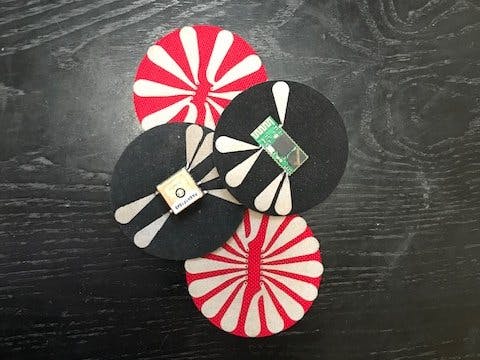We are in contact with textiles for up to 98% of our lives, and they are starting to become intelligent. Part of this revolution includes the integration of electronics into textiles. Electronic textiles, or e-textiles, are an increasingly important part of wearable computing, helping to make pervasive devices truly wearable. These soft, fabric-based computers can provide useful functionality while disappearing discreetly into the fabric of our clothing.
For this project I designed three different fabric badges: CPU Badge, GPS Badge, and Wifi Badge.
This is brain badge, which is powered by an ATtiny84 microprocessor, designed to communicate with external sensors.
This is the programmer of the badge, used to upload custom applications to the ATtiny85 microcontroller. You can use the Arduino IDE to upload the code.
This is the GPS badge designed to connect with the ATtiny84 and get real-time GPS tracking.
This is the Wifi badge designed to connect your clothes to the internet.
This are three other different designs to support other chips. The bottom two (black and red badges) are designed to support the ATTiny84 Mini, the top left (red badge) is for the ATtiny85.
This is the ATtiny85 installed in the first T-shirt prototype. The battery to power the ATtiny is installed using the clothing tag, and the two threads are the positive and the ground for the battery.
Process:
The badges are designed in Rhino and sent to the laser-cutting machine. Once cut, they are glued to a second piece of fabric, and finally the microcontroller is installed.
Use Cases:
- Employee uniform integration for proximity and location tracking as well as ID verification.
- Athletic clothing for team tracking and performance analysis.
- Fashion market for clothes line “smart clothes” enhancements (Children’s clothes for tracking, LED light enhancement etc)








Comments
Please log in or sign up to comment.